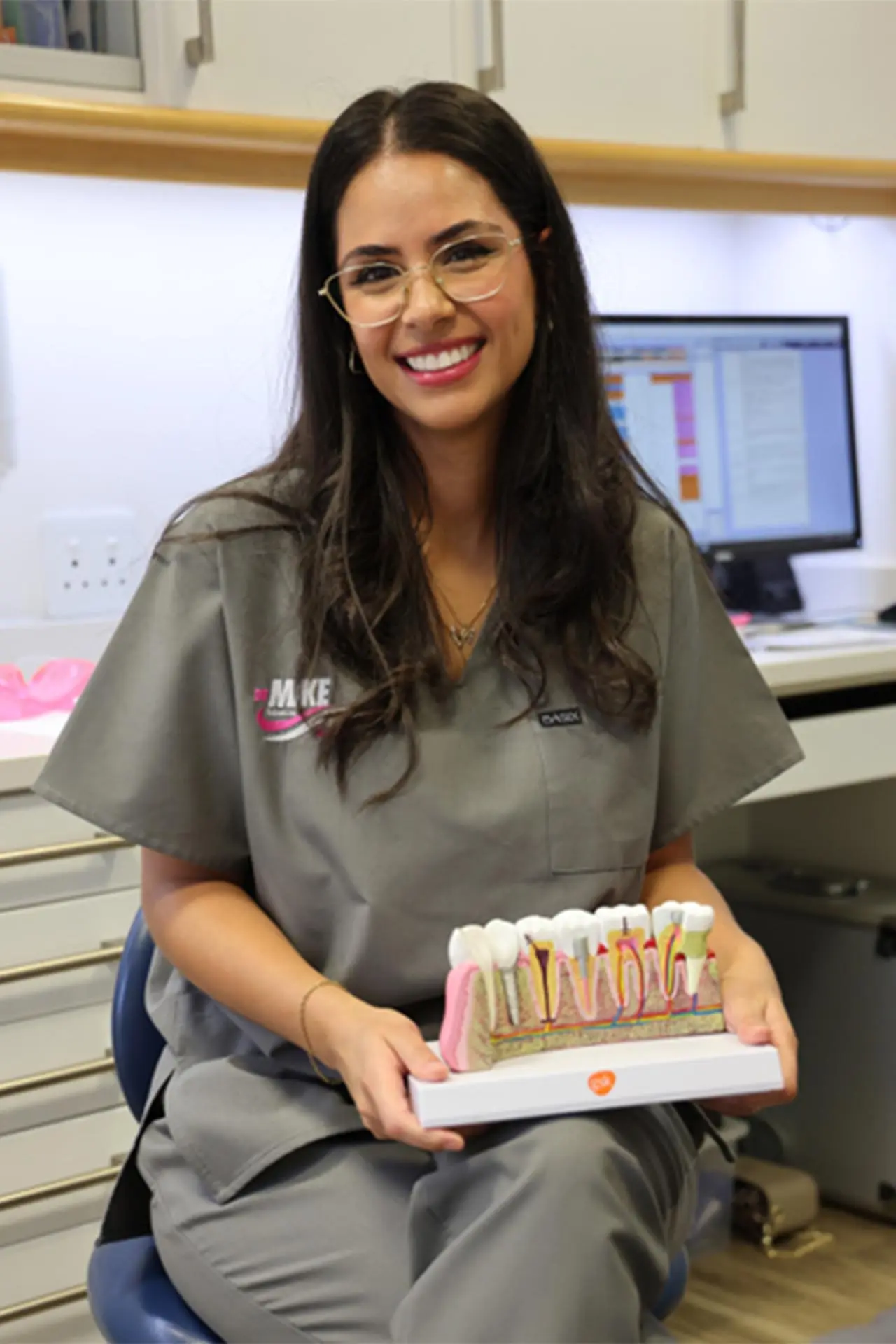What is a Dental Hygienist?
Dental Hygienists are highly trained professionals who are specialists in the field of preventative dental care. Dentists and hygienists work closely together in proactively preventing and controlling dental disease, and to establish and maintain a favourable oral environment to help ensure successful outcomes for past and future treatment.
What do Dental Hygienists do?
Typically, hygienists will:
- Professionally clean your teeth so that you feel confident and healthy about your teeth and smile.
- Apply topical fluoride to your teeth to strengthen and re-mineralise weak areas before these teeth break down with decay.
- Apply agents to your gums and teeth to help reduce and control harmful bacterial activity.
- Monitor and screen for gum disease.
- Clean those areas of your mouth that are inaccessible to you, helping to prevent breakdown of these areas.
- Help in the prevention of cavities and gum disease.
- Advise and council patients on correct oral hygiene techniques and practices.
- Advise and council patients on good dietary and supplementary practices.
- In addition, some hygienists have received advanced training in areas such as administration of local anesthesia and the treatment of some gum disorders.
What is a Regular or Standard Cleaning?
A regular cleaning is where only portions of the teeth above the gum are cleaned and is recommended for persons who do not have bone loss, periodontal disease, or infection around their teeth.
There should also be no bleeding, mobility of teeth, receded areas where the gum has pulled away from the teeth, or gaps where the spaces around the roots are exposed. The mouth should be healthy with no gum or bone problems. Regular clean should be repeated at least every 4-6 months.
What is Periodontal Disease?
Periodontal disease is very common but does not always have distinct symptoms. It is an inflammation and infection of the supporting structure of the teeth, which includes the gums, bone ligaments and root surfaces that can eventually result in loss of teeth.
You may notice that your gums bleed easily, that you have a bad taste in your mouth, that your gums appear red and swollen, that your teeth appear longer or seem to have shifted or you may notice nothing at all.
What is a Root Planing Procedure?
Patients with Periodontal disease may require root planing to remove diseased deposits from the roots of the teeth. Other treatment, including surgery, may be required. Root planing removes bacteria and their toxins, tartar and diseased deposits from the surfaces of tooth roots.
Scaling (using dental instruments or an ultrasonic machine to remove deposits) is required for the full length of the root surface down to where the root, gum and bone meet.
